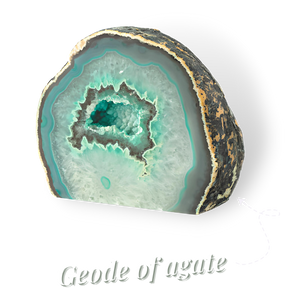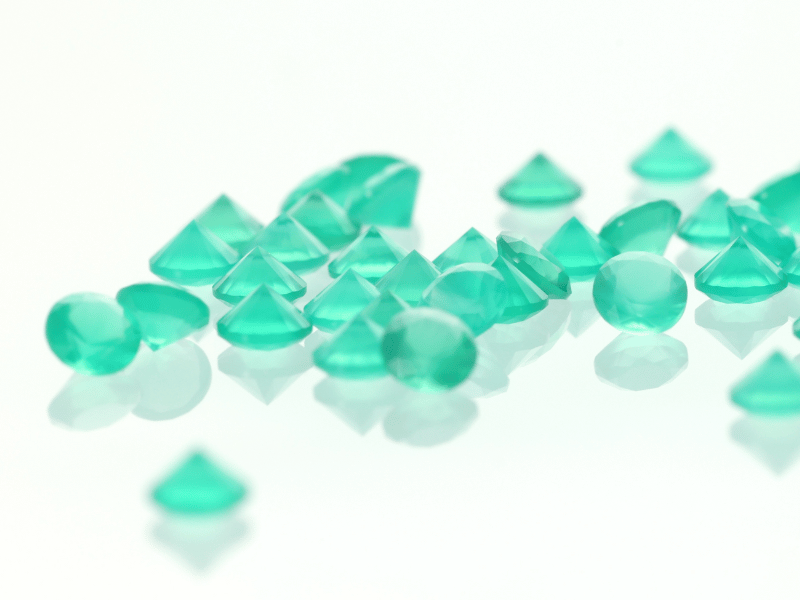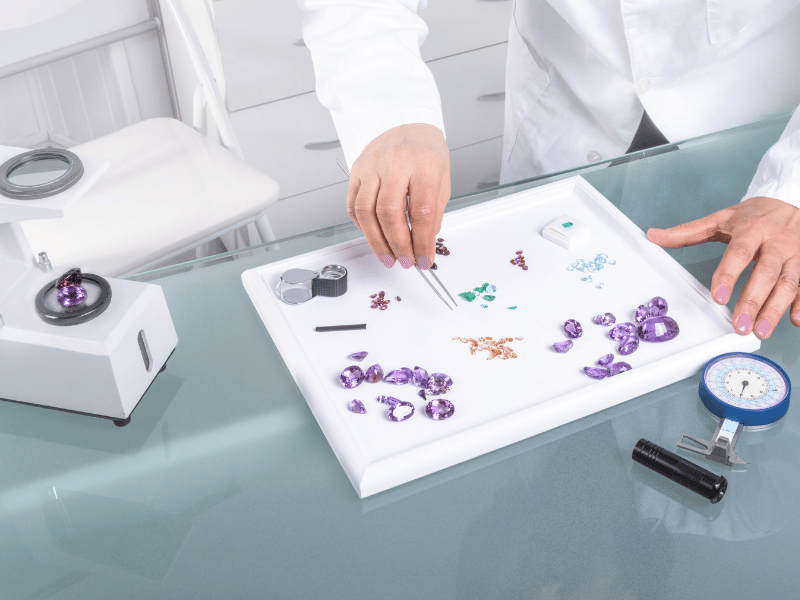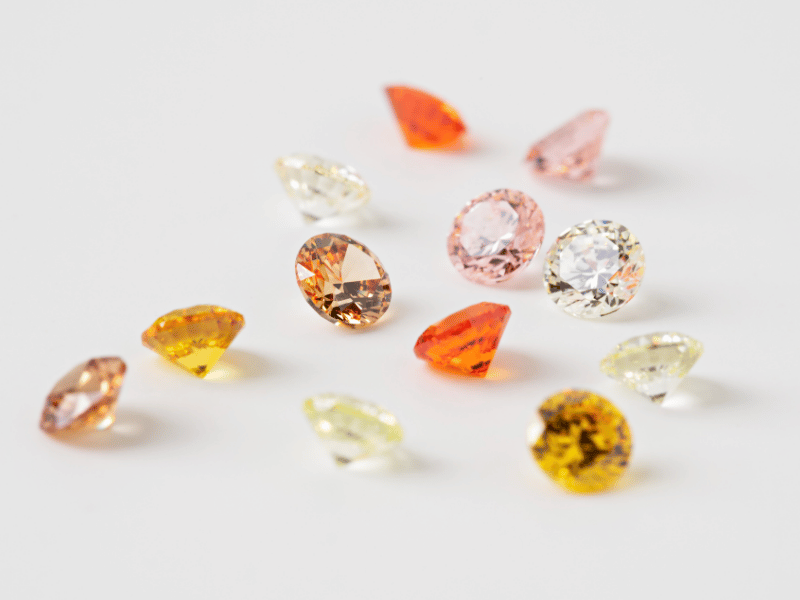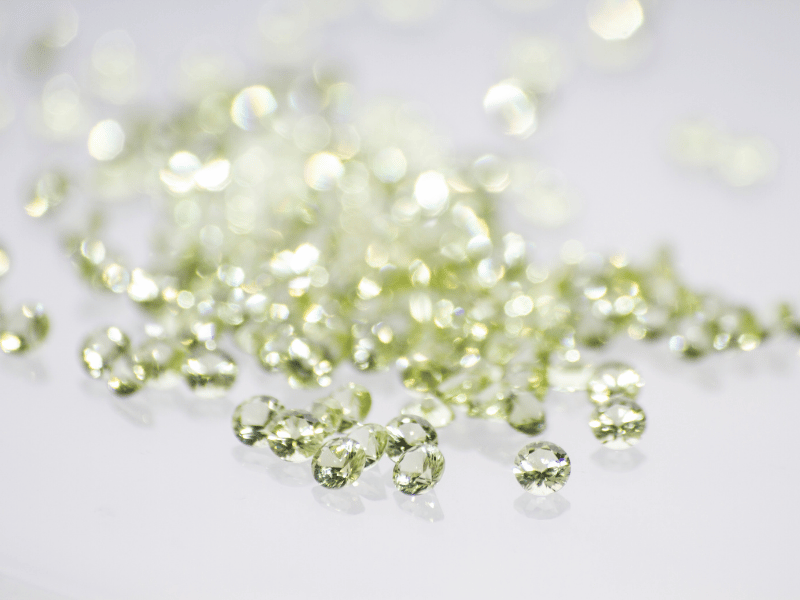Green agate is a gem belonging to the family of chalcedonies; it can feature different colours and several aspects: from translucent to opaque, a plain colour or various colour zonation.
Such diverse complexions give their identity to the numerous existing types of gems within the family of chalcedonies: cornelian, onyx, jasper, and agate are the most popular ones. The name of agate comes the Greek akhatês, in reference to a river in Sicily in which agates used to be found abundantly.
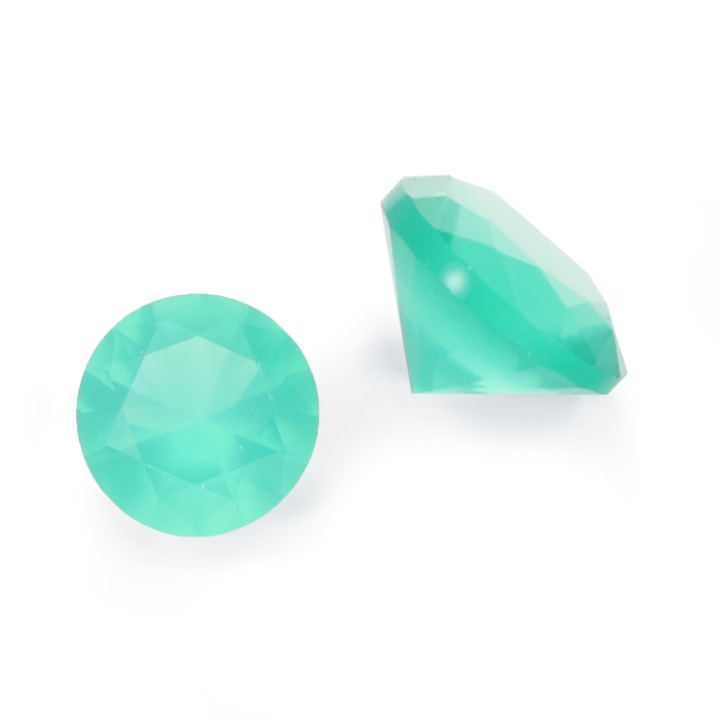
The Characteristics of Agate
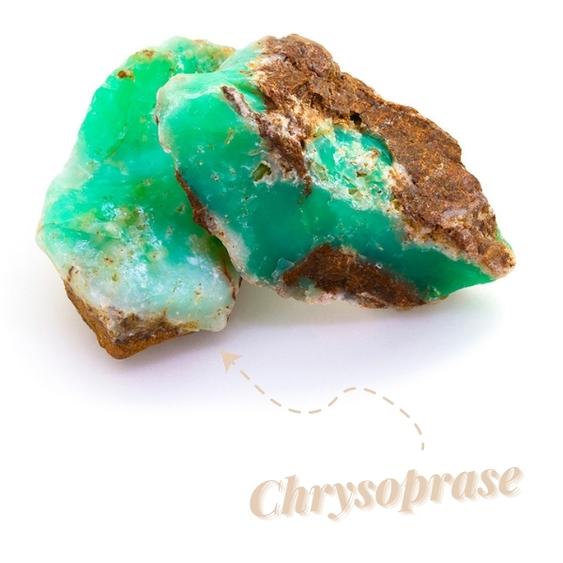
Agate is classified in the same mineralogical group as quartz, due to their chemical composition being the same: SiO2 (silicon oxide).
But unlike quartz crystals, agate presents a polycrystalline – or microcrystalline structure; in other words, a large quantity of quartz microcrystals come forming the agate.
Concerning Green Agate in particular, its colour is the result of a dyeing enhancement.
It is indeed possible to give the agate any colour, by means of a dyeing treatment. The microcrystalline architecture will allow the colour to come blending in the inner structure of the stone. And this is how you can get so many colours as blue, pink, red, as well as green, thereby Green Agate!
The chalcedony gem called Chrysoprase features a naturally green colour, it is however rarely deep green.
Physical Properties of Agate
Its Hardness
Regarding technical characteristics, the physical and chemical properties of agate are similar to those of quartz and other stones from the family of chalcedonies.
The average hardness of the agate ranges between 6.5 and 7, which ensures a decent resistance to scratches, it is however recommended to handle it with care.
Its Density
As far as density is concerned, it ranges between 2.55 and 2.65, agate is thus quite a light-weight material compares to zirconium oxides (CZ) or corundums.
Its Mechanical strength
Agate offers good mechanical strength (resistance to shocks), its chemical resistance and heat resistance are average.
It therefore needs to be handled at proper temperatures, and requires to be cautious about the chemicals used, particularly, when working with dyed agates, about dilutants and products with basic pH.
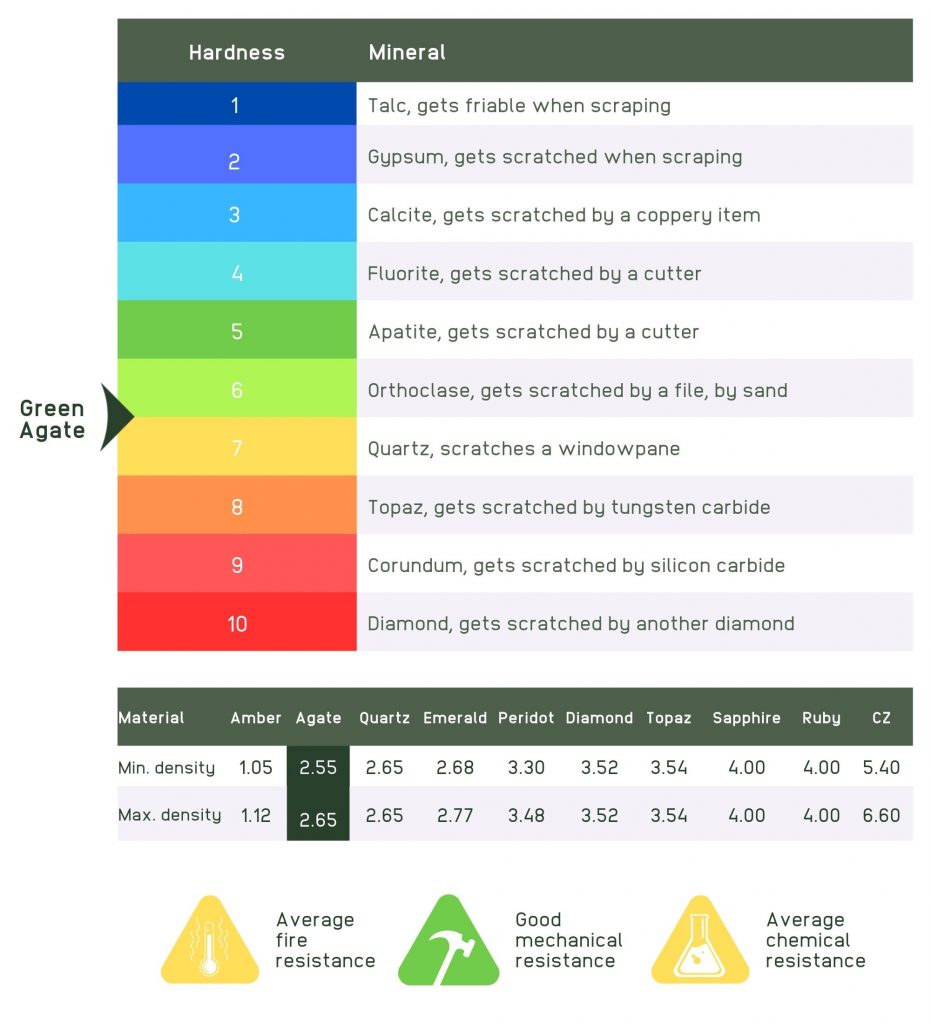
Deposits of Agate
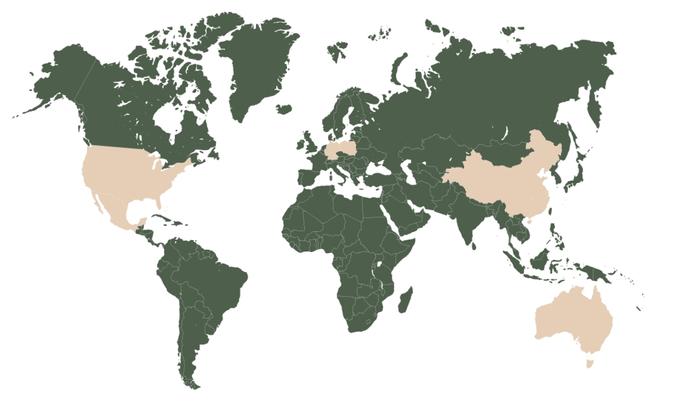
Agate is a gem that is found in large quantities throughout the world.
The known deposits are quite numerous, and it is very likely that the country in which you are living, has deposits of agate or chalcedony in its own soil.
The biggest supplier country for agates is Brazil. Others are important producers internationally: the United States of America, Mexico, Australia, China, Germany, Poland.
Incidentally, many other countries can also be suppliers but at a lower scale: France, Spain, Italy, the United Kingdom, Morocco, Mongolia, Russia, India, Madagascar, Tanzania, Chile, Peru, Argentina, Uruguay, …
Facts on Agate
Agate is a quality stone that is being used since centuries in jewellery or sculpture ornamentation. The famous Rubens Vase for instance, is a creation predominantly made of grey to brown agate, designed around year 400 for a Byzantine emperor.
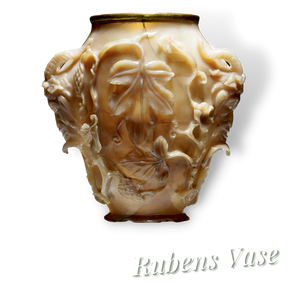
Brazil and Mexico are also renowned for producing geodes of agate and amethyst. These are round stones, typically sawed (or broke open) in two parts, which inner walls are lined with agate and other crystals.
